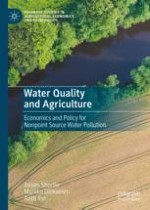2021 | OriginalPaper | Chapter
5. Environmental Policy Instruments for Agriculture
Authors : James Shortle, Markku Ollikainen, Antti Iho
Published in: Water Quality and Agriculture
Publisher: Springer International Publishing
Activate our intelligent search to find suitable subject content or patents.
Select sections of text to find matching patents with Artificial Intelligence. powered by
Select sections of text to find additional relevant content using AI-assisted search. powered by
